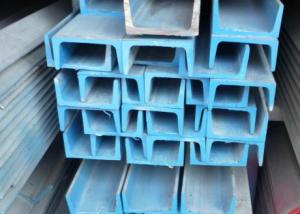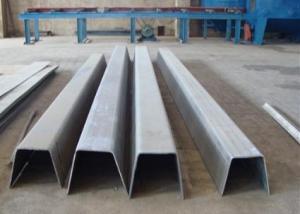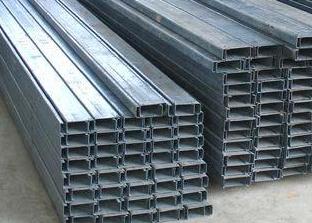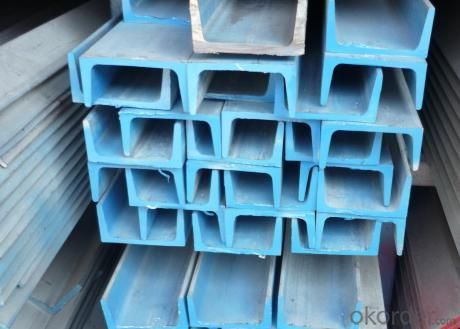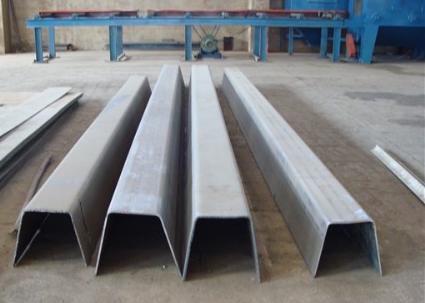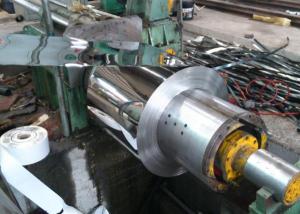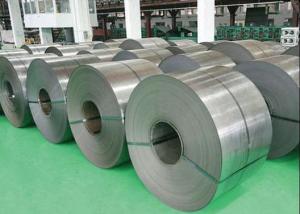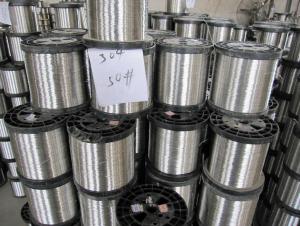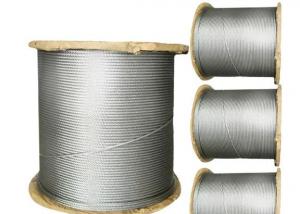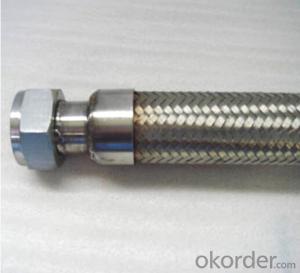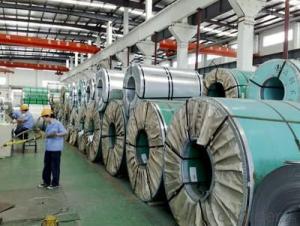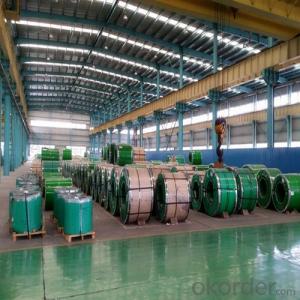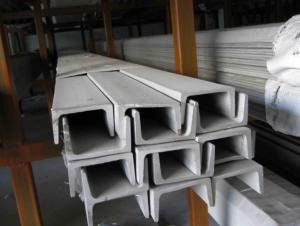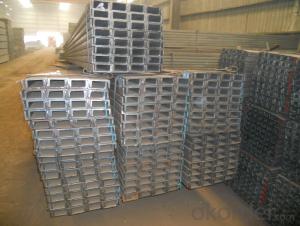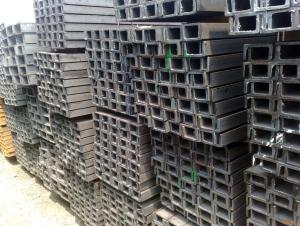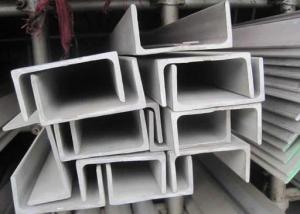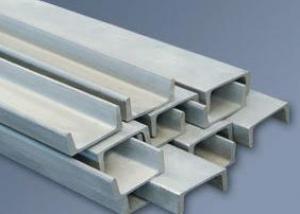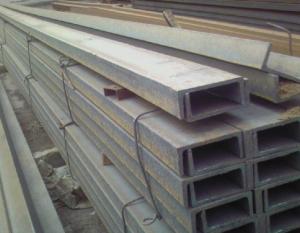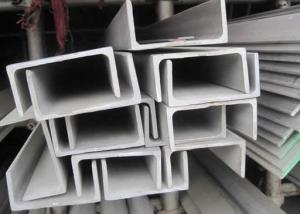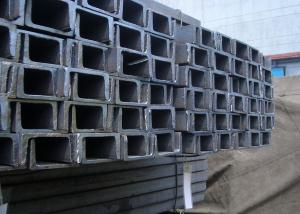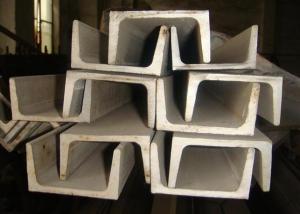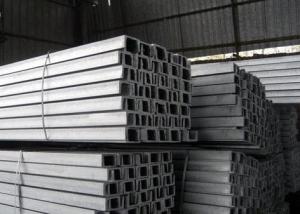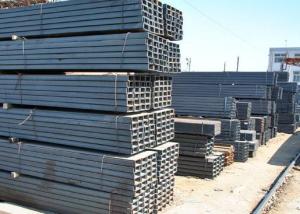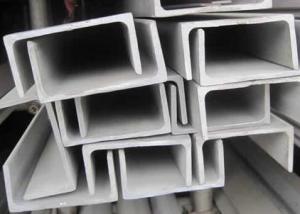Prime Stainless Steel Channels
- Loading Port:
- China Main Port
- Payment Terms:
- TT or LC
- Min Order Qty:
- 5 Tons m.t.
- Supply Capability:
- 1000 Tons Per Month m.t./month
OKorder Service Pledge
OKorder Financial Service
You Might Also Like
Stainless Steel Channel
1.Size: 3mm to 24mm Thickness
2.Material:SUS201,202,301,304,304L,316,316L ,321 etc.
3.Length: 4m to 6m,or according to the customer's requirement
4.Standard: AISI,JIS,GB,DIN
5.Finish: Cold Drawn ,hot rolled & Polishing
6.Testing: Each heat number and batch must be tested for both chemical and mechanical properties
7.Application: Produce screw and nut, engine parts, indoor and outdoor decorating,etc.
|
Size (mm) |
Thickness (mm) | ||||||||
|
H×B |
3 |
4 |
5 |
6 |
7 |
8 |
9 |
10 |
12 |
|
Mass (Kg/m) | |||||||||
|
40×20 |
1.79 |
|
|
|
|
|
|
|
|
|
50×25 |
2.27 |
|
|
|
|
|
|
|
|
|
60×30 |
2.74 |
3.56 |
4.37 |
5.12 |
|
|
|
|
|
|
70×35 |
3.23 |
4.21 |
5.17 |
6.08 |
|
|
|
|
|
|
80×40 |
3.71 |
4.84 |
5.96 |
7.03 |
|
|
|
|
|
|
90×45 |
4.25 |
5.55 |
6.83 |
8.05 |
|
|
|
|
|
|
100×50 |
4.73 |
6.18 |
7.62 |
8.98 |
10.3 |
11.7 |
13 |
41.2 |
|
|
120×60 |
|
|
9.2 |
10.9 |
12.6 |
14.2 |
|
|
|
|
130×65 |
|
|
10.1 |
11.9 |
13.8 |
15.5 |
17.3 |
19.1 |
|
|
140×70 |
|
|
|
12.9 |
14.9 |
16.8 |
18.8 |
20.7 |
|
|
150×75 |
|
|
|
13.9 |
16 |
18.1 |
20.2 |
22.2 |
26.3 |
|
160×80 |
|
|
|
14.8 |
17.1 |
19.3 |
21.6 |
23.8 |
28.1 |
|
180×90 |
|
|
|
16.7 |
19.4 |
22 |
24.5 |
27 |
32 |
|
200×100 |
|
|
|
18.6 |
21.6 |
24.5 |
27.4 |
30.2 |
35.8 |
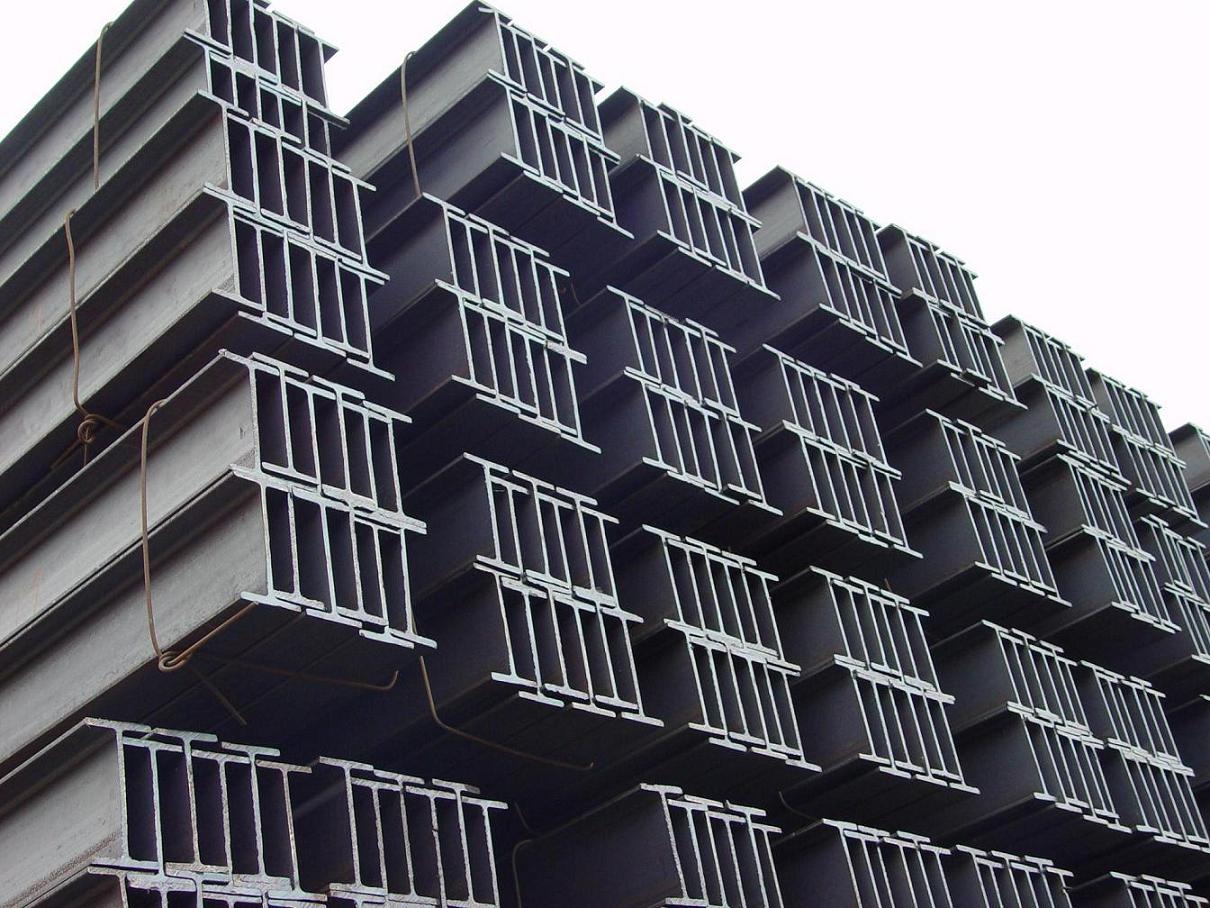
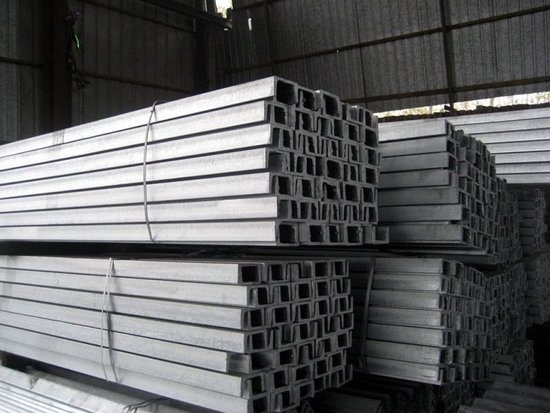
- Q: What are the different installation techniques for stainless steel channels?
- There are several different installation techniques for stainless steel channels, depending on the specific requirements of the project. Some of the common techniques include: 1. Welding: This is one of the most popular methods for installing stainless steel channels. It involves using a welding machine to join the channels together or to connect them to other structural elements. Welding provides a strong and durable connection, making it suitable for heavy-duty applications. 2. Mechanical Fasteners: Another common installation technique is using mechanical fasteners such as screws, bolts, or rivets. This method is quicker and easier compared to welding, and it allows for easier disassembly if needed. However, it may not provide the same level of strength as welding, so it is important to select the appropriate fasteners based on the load requirements. 3. Adhesive Bonding: In some cases, stainless steel channels can be installed using adhesive bonding. This involves applying a specialized adhesive to the surfaces to be joined and allowing it to cure. Adhesive bonding offers a clean and aesthetically pleasing installation, without the need for visible fasteners. However, it may not be suitable for high load-bearing applications. 4. Clamping: For temporary or adjustable installations, clamping can be used. This involves using clamps or brackets to secure the stainless steel channels in place. Clamping is a versatile technique that allows for easy adjustments or repositioning, making it ideal for temporary structures or installations that may require future modifications. 5. Channel Inserts: Some stainless steel channels come with pre-installed channel inserts, which are designed to facilitate installation. These inserts can provide a secure and stable connection, helping to simplify the installation process and reduce the need for additional fasteners or tools. It is important to consider the specific requirements of the project, such as load-bearing capacity, aesthetics, and ease of installation, when selecting the appropriate installation technique for stainless steel channels. Consulting with a professional or following the manufacturer's recommendations can ensure a successful installation.
- Q: Can stainless steel channels be used for framing partitions?
- Yes, stainless steel channels can be used for framing partitions. Stainless steel channels are durable, corrosion-resistant, and have excellent strength properties, making them suitable for various structural applications, including framing partitions. They provide stability and support to the partition walls, ensuring longevity and structural integrity.
- Q: What are the different surface reflectivity options for stainless steel channels?
- Stainless steel channels come with a variety of surface reflectivity options, each having distinct characteristics and aesthetic appeal. Let's explore the most common choices: 1. Mill Finish: This option is simple and cost-effective. The stainless steel channel retains its natural state after manufacturing, resulting in a dull and non-reflective surface. This finish offers a rustic and industrial look. 2. Brushed Finish: Also known as a satin finish, this option involves brushing the stainless steel surface with an abrasive material, creating a consistent pattern. It produces a soft sheen with a directional grain, giving it a contemporary and elegant appearance. 3. Mirror Finish: This option requires polishing the stainless steel surface to a high shine, resulting in a reflective and mirror-like appearance. Achieving this finish involves a meticulous polishing process to eliminate imperfections, resulting in a visually striking and highly reflective surface. 4. Bead Blasted Finish: With this option, the stainless steel surface undergoes blasting with tiny glass beads. The result is a uniform and matte appearance. This finish offers a textured and non-reflective surface, making it ideal for applications where glare reduction is desired. 5. Colored Finish: Stainless steel channels can also be coated with colored finishes, such as powder coating or PVD (Physical Vapor Deposition) coating. These options provide both aesthetic appeal and extra protection against corrosion, while still allowing the underlying stainless steel texture to show through. Ultimately, the choice of surface reflectivity for stainless steel channels depends on the desired aesthetic, functionality, and budget. Each option presents unique characteristics, allowing for customization to suit various applications and design preferences.
- Q: Can stainless steel channels be used in underground or submerged applications?
- Yes, stainless steel channels can be used in underground or submerged applications. Stainless steel is known for its corrosion resistance, making it suitable for environments with high moisture or chemical exposure. It can withstand the harsh conditions of underground or submerged applications, ensuring durability and longevity.
- Q: Are stainless steel channels suitable for the construction of equipment enclosures?
- Indeed, equipment enclosures can be constructed using stainless steel channels. Stainless steel, being a robust and long-lasting material, offers exceptional safeguarding and security for the equipment contained within the enclosure. It possesses resistance to corrosion, heat, and impact, rendering it well-suited for a range of industrial and commercial uses. Furthermore, stainless steel channels are effortless to clean and maintain, guaranteeing a prolonged lifespan for the equipment enclosure. Moreover, stainless steel boasts an appealing appearance that can enhance the overall visual appeal of the equipment enclosure. In conclusion, stainless steel channels supply the essential strength, durability, and protection necessary for equipment enclosures.
- Q: Can stainless steel channels be used for swimming pool or water feature installations?
- Stainless steel channels are suitable for swimming pool or water feature installations. This material is highly durable and resistant to corrosion, making it perfect for wet environments such as swimming pools or water features. Its ability to resist rust and stains ensures its durability and reduces the need for maintenance. Stainless steel channels can be utilized to create drainage systems, paths for water circulation, or decorative elements within swimming pools or water features. They offer a sleek and contemporary appearance and can withstand the weight and pressure of water due to their strength. Moreover, stainless steel channels are easy to clean and sanitize, making them a hygienic option for water installations.
- Q: Can stainless steel channels be used for supporting heavy-duty machinery?
- Yes, stainless steel channels can be used for supporting heavy-duty machinery due to their high strength and durability. Stainless steel is known for its resistance to corrosion, which makes it suitable for environments where machinery may be exposed to moisture or chemicals. Additionally, stainless steel channels can provide excellent structural support, ensuring the stability and safety of heavy machinery.
- Q: Can stainless steel channels be used in food processing environments?
- Yes, stainless steel channels are commonly used in food processing environments due to their hygienic properties, resistance to corrosion, and ease of cleaning.
- Q: Can stainless steel channels be used in the construction of mezzanine floors?
- Yes, stainless steel channels can be used in the construction of mezzanine floors. Stainless steel is a durable and corrosion-resistant material, making it suitable for various applications in construction. Stainless steel channels provide structural support and can be used as beams or joists in mezzanine floor systems. They offer strength and stability, making them ideal for supporting heavy loads on the mezzanine level. Additionally, stainless steel channels have an aesthetic appeal, and their sleek finish can enhance the overall look of the mezzanine floor.
- Q: How do stainless steel channels perform in high-temperature applications?
- Stainless steel channels are renowned for their outstanding performance in applications that involve high temperatures. With their high melting point and ability to resist heat, stainless steel channels can endure extreme temperatures without experiencing any notable strength or structural deterioration. The presence of chromium in stainless steel makes it highly resistant to oxidation, preventing the formation of scale or rust when exposed to intense heat. This property ensures that stainless steel channels maintain their appearance and functionality even in the most severe temperature environments. Moreover, stainless steel channels possess superb thermal conductivity, enabling them to effectively distribute and dissipate heat. This characteristic is particularly advantageous in high-temperature applications where the channels need to transfer heat away from delicate components or equipment. Additionally, stainless steel channels exhibit low thermal expansion, meaning they do not warp or deform when subjected to sudden temperature fluctuations. This ensures their dimensional stability and reliability. Furthermore, stainless steel channels offer exceptional resistance to corrosion, a critical feature in high-temperature environments where moisture, chemicals, or other corrosive agents are commonly present. They can withstand harsh conditions and maintain their structural integrity, even in aggressive chemical environments. In conclusion, stainless steel channels are an ideal choice for high-temperature applications due to their exceptional heat resistance, thermal conductivity, dimensional stability, and corrosion resistance. Whether it is in industrial furnaces, power plants, or automotive exhaust systems, stainless steel channels provide reliable and long-lasting performance in demanding high-temperature environments.
1. Manufacturer Overview
| Location | Jiangsu, China |
| Year Established | 2010 |
| Annual Output Value | above US$8 million |
| Main Markets | East Asia, Middle East, West Europe |
| Company Certifications |
2. Manufacturer Certificates
| a) Certification Name | |
| Range | |
| Reference | |
| Validity Period |
3. Manufacturer Capability
| a) Trade Capacity | |
| Nearest Port | Shanghai |
| Export Percentage | |
| No.of Employees in Trade Department | above 50 people |
| Language Spoken: | English, Chinese, Arabic |
| b) Factory Information | |
| Factory Size: | about 15000 square meter |
| No. of Production Lines | above 4 |
| Contract Manufacturing | OEM Service Offered,Design Service Offered |
| Product Price Range | Average |
Send your message to us
Prime Stainless Steel Channels
- Loading Port:
- China Main Port
- Payment Terms:
- TT or LC
- Min Order Qty:
- 5 Tons m.t.
- Supply Capability:
- 1000 Tons Per Month m.t./month
OKorder Service Pledge
OKorder Financial Service
Similar products
Hot products
Hot Searches
Related keywords
